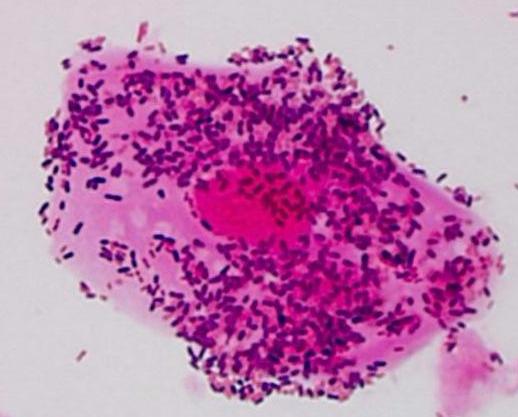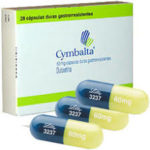Gardnerella Vaginalis
What is Gardnerella Vaginalis?
Gardnerella Vaginalis is a condition that affects vagina and is a result of infection from bacteria. This condition leads to unusual discharge from the vagina. 1, 2, 3

Causes
Bacteria are the main causes of gardnerella Vaginalis as well as vaginosis. Usually, various types of bacteria live in the vagina; they are harmful and good bacteria. The good bacteria are called Lactobacilli and are responsible for maintaining the acidic nature of your vagina.
The numbers of bacteria in your vagina are regulated; harmless bacteria populations are more than the harmful ones. If the population of bacteria in the vagina changes such that harmful bacteria such as gardnerella vaginalis are more than the Lactobacilli (good bacteria), an infection occurs.
Risk Factors
You are at high risk of being infected with gardnerella if you:
- Are involved in certain type of sexual activity. Gardnerella is not transmitted through sex. A man cannot transfer the bacteria, which is the source of gardnerella to his female sexual partners. On the other hand, gardnerella can spread among female partners through sharing of sexual toys and when they come into contact with secretions from each other’s vagina.
- Use intrauterine devices -Intrauterine devices are a type of contraceptives used to prevent pregnancy from occurring by stopping fertilization of the egg and sperm. Intrauterine device is tube inserted into your uterus through the vagina by a skilled doctor. 6
- Although it is unclear how intrauterine devices increases your risk of gardnerella, several researches highlights possible expalanations.One of the explanation is that it causes irregular bleeding in women which increases the concentration of gardnerella vaginalis bacteria in the vagina which cause an infection
- Douching your vagina- Douching is washing your vagina usually by mixing water and vinegar. Douching your vagina may cause imbalance in your vagina’s bacteria populations. This encourages growth of harmful bacteria in your vagina leading to infections. 8
Other conditions that can promote the growth of gardnerella vaginalis bacteria in your vagina include
- When you are expectant7
- You experience changes in your hormones
- Using deodorants near your vagina
- Putting on synthetic pants and tight clothing.
Symptoms
One of the common symptoms of gardnerella Vaginalis is discharge from your vagina is watery and heavy. The discharge may have foul smell like that of a fish and appears yellow or green in colour. Gardnerella may also cause itching in some women.
Diagnosis
The first step in diagnosing gardnerella is to discuss your symptoms with your doctor. Your doctor may ask you to give a detailed description of your vaginal discharge; the colour of the discharge and type of smell from the discharge.

Also, your doctor may ask you to provide a history of your medical condition such as whether you have an infection in the urinary tract or a sexual transmitted infection.
Knowing your symptoms is not enough to comprehensively diagnose you with gardnerella, other tests are required. Your doctor may take a sample of your vaginal discharge and analyze it in the laboratory to find out the cause of the infection.
You may be diagnosed with gardnerella if the tests reveal the following:
- Your vaginal walls have a coating that is white and thin.
- Your vaginal discharge has a pH of more than 4.5
- When a drop of potassium hydroxide is mixed with a sample of your vaginal discharge, a fish like odor is released.
Treatment
The aim of treatment is to treat the symptoms of gardnerella. Your doctor may recommend antibiotic medications to treat gardnerella. The most common antibiotics prescribed include clindamycin and metronidazole. These drugs can be taken orally or applied as a gel or cream on your vagina.
Before using metronidazole and clindamycin, inform your doctor if you have any of the following conditions:
- Anemia
- Liver diseases
- Epilepsy
- Any stomach or intestinal disease
- Disorders in your nerves
- You are breastfeeding; metronidazole can be passed through breast milk and harm your baby.
After you have taken antibiotics, avoid alcohol for more than 3 days because alcohol may cause nausea and vomiting and increase your heartbeat.
Side Effects of Antibiotics
One of the side effects of antibiotics you may experience is diarrhea that has blood and is watery. You may also have pain while urinating, difficulty in concentrating, pain behind your eyes and painful skin reaction.
Drugs that Interact with Metronidazole
There are some drugs that affect the effectiveness of metronidazole. You should tell your doctor any medications you are using to avoid complications. The following drugs may interact with metronidazole:
- Disulfiram
- Warfarin
- Cimetidine
Prevention
The following are some tips that may be useful in helping you prevent gardnerella:
Check on your diet
Eat food that can enhance your immune system so that it protects you against any infections. You can eat food rich in vitamin C, fresh garlic as well as drink a lot of water. This will help your body to naturally protect you against gardnerella.
Avoid douching your vagina with soap
Cleaning your vagina with soap will disrupt the normal pH of in the vagina making you vulnerable to infections. You should use plain water; avoid deodorants as you clean your vagina.
Put on fitting clothing
Stop putting on tight clothing like stockings for long periods. You should also change your pants from synthetic to cotton. This will ensure that your vagina is warm to prevent growth of bacteria that may cause infections.
Practice safe sex
When you have gardnerella, avoid sex until this condition has disappeared completely. If you must have sex, make sure your partner is wearing a condom. Normally, the semen from men is alkaline and when it comes into contact with your vagina, it raises your viginal pH. This makes you vulnerable to gardnerella.
When to see Your Doctor
You should visit medical professional when you notice unusual discharge from your vagina that has a foul smell like fish.
Reference List
- Bacterial Vaginosis. https://m.theonlineclinic.co.uk/bacterial-vaginosis.asp
- Gardnerella Vaginalis. http://www.healthcentral.com/encyclopedia/hc/gardnerella-vaginalis-3168696/
- Causes of gardnerella. http://www.livestrong.com/article/25738-causes-gardnerella/
- Metronidazole. https://www.drugs.com/metronidazole.html
- Bacterial Vaginosis (Gardnerella Vaginitis). http://www.health.harvard.edu/womens-health/bacterial-vaginosis-gardnerella-vaginitis
- Intrauterine devices. http://www.nhs.uk/Conditions/contraception-guide/Pages/iud-coil.aspx
- Gardnerella in pregnancy. http://www.kidspot.com.au/birth/pregnancy/pregnancy-health/gardnerella-in-pregnancy
- Vaginal Douching: Helpful or Harmful? http://www.webmd.com/women/guide/vaginal-douching-helpful-or-harmful












